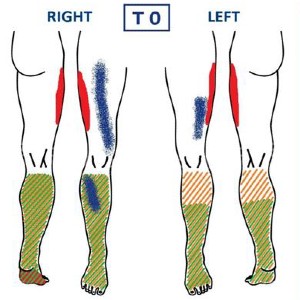Combined effect of medical therapy and rehabilitation in Chronic Ataxic Neuropathy with anti-Disialosyl IgM Antibodies (CANDA): a case report

Accepted: 17 July 2023
HTML: 14
All claims expressed in this article are solely those of the authors and do not necessarily represent those of their affiliated organizations, or those of the publisher, the editors and the reviewers. Any product that may be evaluated in this article or claim that may be made by its manufacturer is not guaranteed or endorsed by the publisher.
Authors
Chronic Ataxic Neuropathy with anti-Disialosyl IgM Antibodies (CANDA) is a rare form of immune-mediated sensory ataxic neuropathy. We describe the case of a 45-year-old man, who was diagnosed with CANDA in October 2018. Since then, he has been treated with monthly courses of intravenous immunoglobulin administration (IV Ig) and, in October 2022, he underwent plasmapheresis, reporting a sudden worsening of clinical and motor picture. After a new IV Ig cycle admission, the patient was hospitalized to perform intensive rehabilitation, involving two individual sessions per day (90 minutes each) for 5 days a week. During hospitalization it was registered a relevant improvement in the muscle strength of the lower limbs (LLs). Furthermore, progressive improvements were recorded both in patient's motor performance and in his level of autonomy in activities of daily living. These results had a positive impact on his quality of life and made it possible to reduce the frequency of IV Ig treatments. This is the first case in literature reporting the combined effect of rehabilitation treatment and medical therapy in CANDA neuropathy.
How to Cite

This work is licensed under a Creative Commons Attribution-NonCommercial 4.0 International License.
PAGEPress has chosen to apply the Creative Commons Attribution NonCommercial 4.0 International License (CC BY-NC 4.0) to all manuscripts to be published.

 https://doi.org/10.4081/ejtm.2023.11557
https://doi.org/10.4081/ejtm.2023.11557



